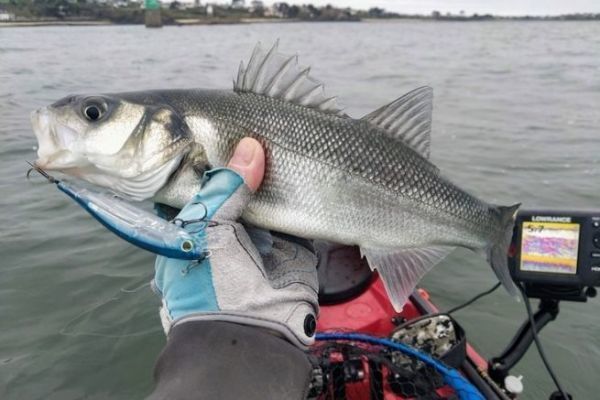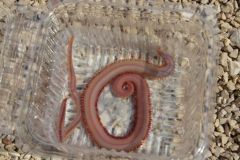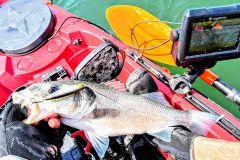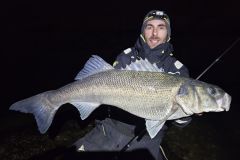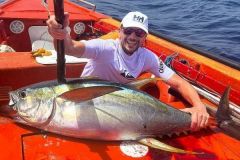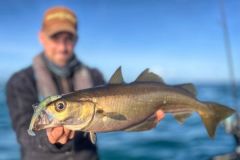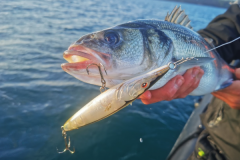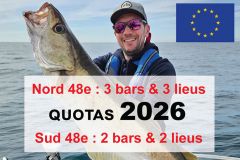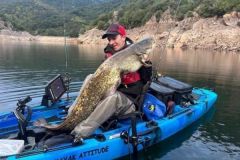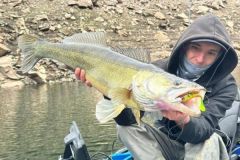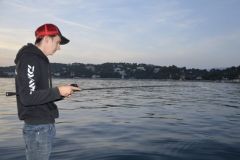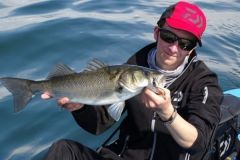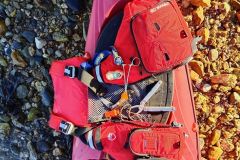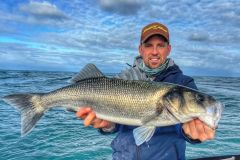Pollock fishing ban
In general, when I go to this part of the coast, in the shallow waters, it's to go and find a spot. This year, with the stupid regulations imposed on this species, there's no point in fishing them for the time being. Indeed, harvesting will only be authorized from May 1st, and no-kill is no longer an option, so we might as well leave them alone. What's more, depending on the depth at which they're hooked, they don't do well with decompression. Still, I wonder. If you pick some up by chance, as we'll see in this return, what do you do with them when you release them, as I did? Aren't we breaking the law?

Session in search of sea bass
So, to avoid taking any, I set off for a little bar session in the parks area, at the bottom of the Abers. The wind is fairly steady from the northeast, pushing me towards the bottom of the Abers. I found a few fish, but they were really on the edges of the last tables. They're not interested in soft lures, so I decide to use swimming fish. My must-have YoZuri 3DB Jerkbait will be the lure of the day. Two colors made all the difference: the traditional sardine blue, a sure bet, and an orangey-brown imitation of the young fish color, to great effect. Unfortunately, the wind is too unpleasant at the bottom of the Abers and I decide to return to the starting point, where there's a slightly more sheltered spot when the winds are north-easterly.
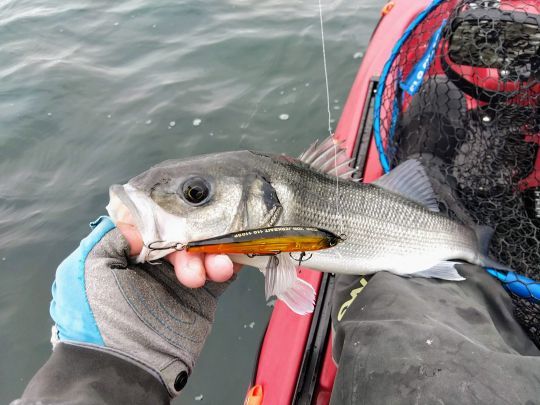
Find a sheltered spot
After an hour's sailing upwind, like a salmon in search of its birthplace gravel pit, I finally find my slightly more sheltered spot. This is where I pull out my famous imitation juvenile spot color. It doesn't fail, as bass respond to this color, young pollack being part of their diet. But I soon become disillusioned. The color also attracts local crappie, cannibalism no doubt being a common feature of their diet. At a depth of 5 meters, I release them, confident that they'll survive, and that's when I ask myself the question I've been asking all along. Am I in order? They may be considered as by-catch, but this notion of by-catch is not taken into consideration in non-commercial fishing... After several bites, I decide to stop and go home.

Sea lice
A quick aside on one of the shots. This has no doubt happened to some of you. I bit a fish that was accompanied by what are known as sea lice, or anilocres. These are small, woodlouse-like crustaceans that cling to their host with a pair of mandibles. They feed on the fish's mucus and skin. These parasites are a real nuisance, wreaking havoc on salmon farms, for example. So if this happens to you, rid your catch of these life-suckers and crush the bugs before releasing your fish.
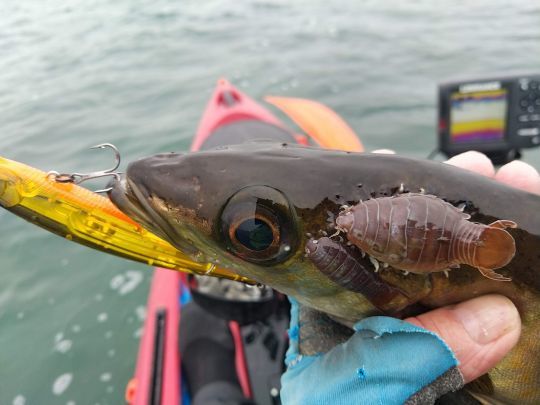
As usual, I end the session on a sheltered stretch of beach for a snack. At the end of this article, I've put a short video with, at the beginning, a brief description of the fishing equipment I've mounted on it.

 /
/ 